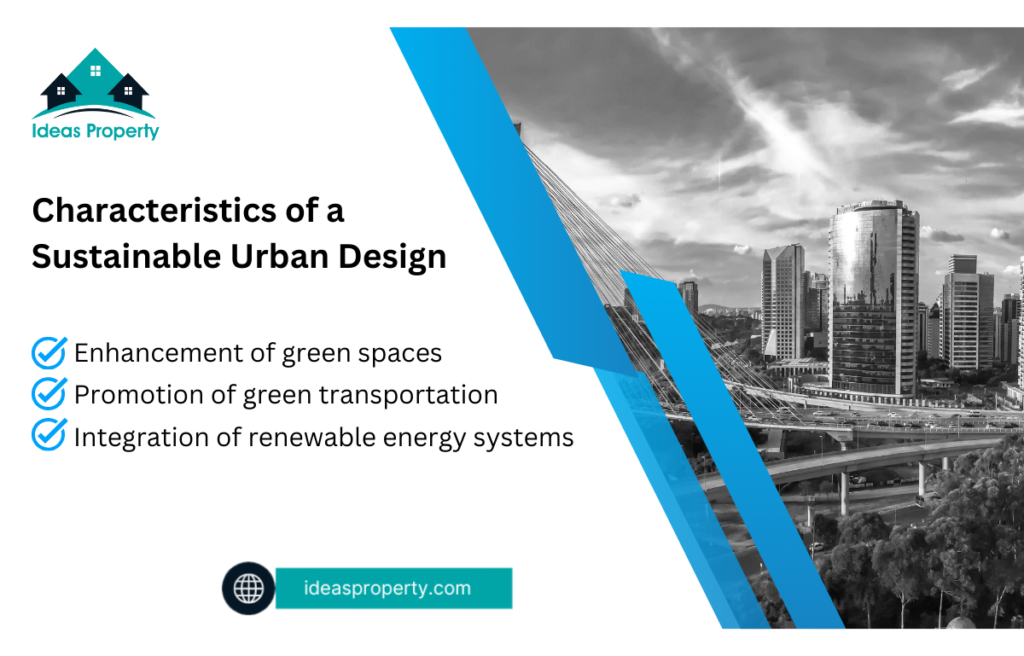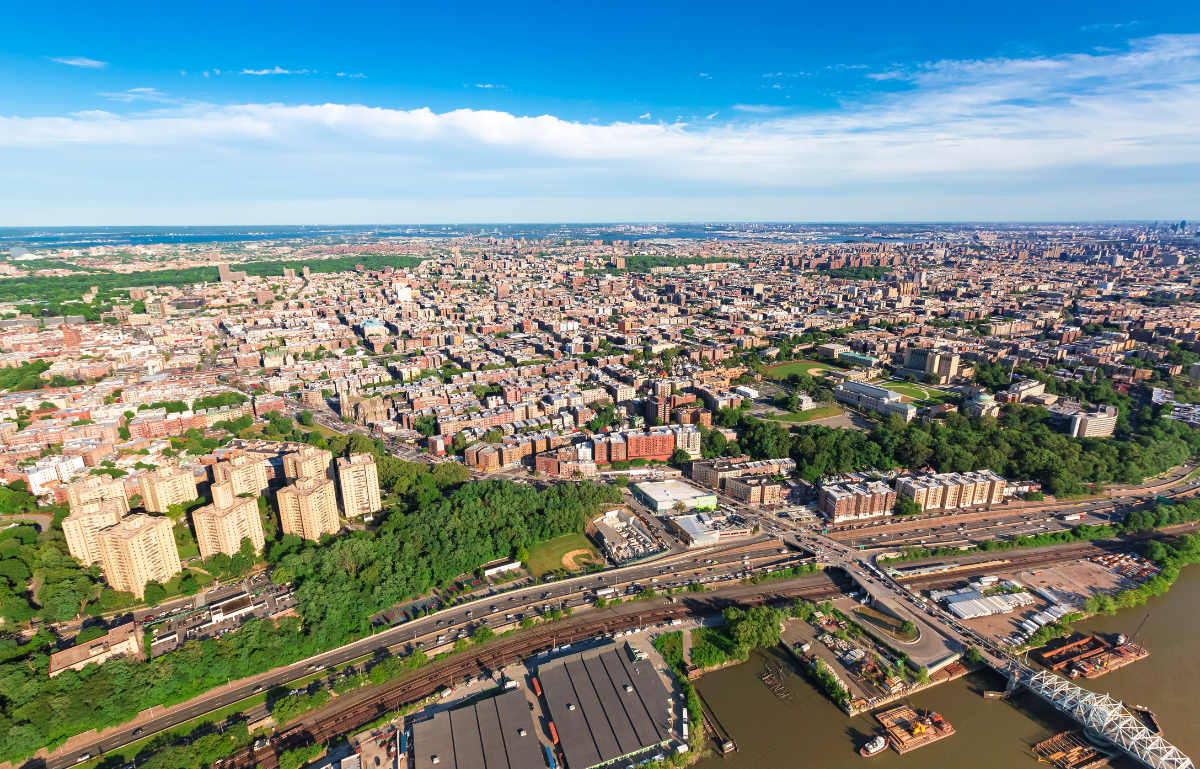Eco-friendly neighborhoods are designed to harmonize with the natural environment, promoting sustainable living while enhancing the quality of life for residents. These communities prioritize renewable energy, efficient waste management, and green infrastructure, creating a healthier and more sustainable future for all. The main goal is to reduce the carbon footprint by integrating practices such as solar energy utilization, water conservation, and green spaces, ultimately fostering a lifestyle that respects and preserves natural resources.
What are Eco-friendly Neighborhoods and Why Are They Important?
Eco-friendly neighborhoods are communities designed with a focus on sustainability and minimizing environmental impact. These neighborhoods prioritize green infrastructure, energy efficiency, and the preservation of natural resources. They are built to reduce the carbon footprint of their residents by incorporating renewable energy sources, sustainable building materials, and efficient waste management systems. The design often includes features such as green roofs, solar panels, and rainwater harvesting systems, which collectively contribute to a more sustainable way of living.
The importance of eco-friendly neighborhoods extends beyond environmental benefits. They offer improved quality of life by fostering healthier living environments with cleaner air, more green spaces, and reduced noise pollution. Such neighborhoods often encourage a sense of community through shared gardens and spaces, promoting social interactions and cooperative living. By reducing reliance on automobiles and increasing walkability, they also improve public health by encouraging more active lifestyles. Overall, eco-friendly neighborhoods are vital in mitigating the impacts of urbanization and climate change while enhancing community resilience.
What Are the Characteristics of a Sustainable Urban Design?
Sustainable urban design focuses on creating cities and eco-friendly neighborhoods that support ecological balance, social equity, and economic viability. One key characteristic is the integration of renewable energy systems, such as solar panels and wind turbines, to reduce dependency on fossil fuels and lower carbon emissions. Sustainable urban design also emphasizes energy-efficient buildings that utilize advanced insulation, natural lighting, and ventilation systems to minimize energy consumption.
Another characteristic is the promotion of green transportation options. Sustainable urban designs encourage the use of public transportation, biking, and walking through well-connected networks and pedestrian-friendly infrastructure. These designs aim to reduce the need for private car use, thereby decreasing pollution and enhancing the quality of urban life. Additionally, sustainable urban design often includes the preservation and enhancement of green spaces, which play a critical role in improving air quality, supporting biodiversity, and providing recreational opportunities for residents.

What Role Does Renewable Energy Play in Sustainable Communities?
Renewable energy is a cornerstone of sustainable communities, providing a clean and inexhaustible source of power that significantly reduces reliance on fossil fuels. In eco-friendly neighborhoods, renewable energy sources such as solar panels, wind turbines, and geothermal systems are commonly used to supply electricity and heating. These technologies not only help reduce greenhouse gas emissions but also lower energy costs for residents, making them economically beneficial as well as environmentally friendly.
Solar energy, in particular, is widely adopted in sustainable communities. Solar panels can be installed on rooftops to capture sunlight and convert it into electricity, providing a decentralized and resilient energy source. This can be complemented by energy storage solutions, such as batteries, to ensure a stable power supply even when the sun is not shining. Wind energy can also be utilized in areas with suitable conditions, contributing to the diversity and reliability of renewable energy sources.
The integration of renewable energy into community planning encourages innovation and the development of new technologies. It also plays a pivotal role in achieving energy independence, reducing vulnerability to energy price fluctuations, and fostering local economic development through job creation in the renewable energy sector. Overall, renewable energy is essential for creating sustainable, self-sufficient communities that can thrive in harmony with the environment.
What Technologies Are Used for Energy Efficiency in Green Homes?
Green homes utilize a variety of technologies aimed at enhancing energy efficiency and minimizing environmental impact. One prominent technology is the use of solar panels, which convert sunlight into electricity, reducing reliance on fossil fuels and lowering utility bills. Solar energy systems can be integrated with battery storage solutions to provide a reliable power supply even during non-sunny periods.
Smart home technologies also play a significant role in energy conservation. These systems allow homeowners to monitor and control energy use through devices such as smart thermostats, which optimize heating and cooling schedules based on occupancy patterns. Energy-efficient lighting, like LED bulbs, and energy-efficient appliances are also essential components of green homes, contributing to lower energy consumption and costs.
Additionally, advanced insulation materials and techniques help maintain comfortable indoor temperatures while reducing the need for heating and cooling. By implementing these technologies, green homes achieve greater energy efficiency, lower environmental footprints, and enhanced comfort for residents.
How Does Spatial Planning Contribute to Eco-friendly Neighborhoods?
Spatial planning plays a crucial role in creating eco-friendly neighborhoods by strategically organizing land use to maximize environmental benefits and minimize ecological footprints. It integrates considerations for energy efficiency, transportation, and climate resilience into urban development, fostering communities that are both sustainable and livable. By designing compact urban areas that emphasize public transit, biking, and walking, spatial planning reduces reliance on automobiles, thereby decreasing greenhouse gas emissions and traffic congestion. Moreover, it encourages mixed-use developments where residential, commercial, and recreational spaces coexist, promoting a vibrant community life with reduced energy demands.
Effective spatial planning also incorporates green infrastructure, such as parks, green roofs, and urban forests, which enhances urban resilience to climate change. These green spaces not only provide recreational opportunities and improve air quality but also manage stormwater and support biodiversity. By prioritizing these elements, spatial planning contributes to the creation of neighborhoods that are environmentally friendly and equipped to handle the challenges of urbanization and climate change.
How Do Community Gardens and Green Spaces Promote Sustainability?
Community gardens and green spaces are vital components of sustainable neighborhoods, offering numerous environmental, social, and economic benefits. They provide a space for residents to grow their own food, which reduces the carbon footprint associated with transporting produce and encourages healthy eating habits. Community gardens also serve as educational hubs, where people can learn about sustainable agriculture and biodiversity.
Green spaces, such as parks and urban forests, contribute to environmental sustainability by improving air quality, managing stormwater, and providing habitats for wildlife. They also enhance the aesthetic appeal of neighborhoods and promote physical and mental well-being by offering spaces for recreation and relaxation. Furthermore, these green areas can help mitigate the urban heat island effect by lowering temperatures and improving local microclimates.
Overall, community gardens and green spaces foster a sense of community and connection to nature, encouraging residents to engage in sustainable practices and care for their environment. By integrating these elements into urban planning, neighborhoods can become more resilient, healthier, and more sustainable.

What Are the Benefits of Walkability and Reduced Car Dependency in Neighborhoods?
Walkable neighborhoods offer numerous benefits, ranging from environmental advantages to improvements in community health and economic growth. By designing urban spaces that prioritize walking and cycling over car travel, communities can significantly reduce greenhouse gas emissions. Fewer cars on the road mean lower carbon emissions and less air pollution, contributing to a cleaner environment and mitigating climate change impacts. Additionally, walkable areas reduce urban heat island effects by integrating green infrastructure, such as shaded sidewalks and trees, which also enhance aesthetic appeal and air quality.
From a health perspective, increased walkability promotes physical activity, reducing the risk of obesity, cardiovascular diseases, and other chronic health conditions. Residents of walkable neighborhoods are more likely to incorporate walking into their daily routines, leading to improved overall health and longevity. Moreover, these areas often foster greater social interaction, as people walking or biking tend to engage more with their surroundings and neighbors, thereby strengthening community bonds and reducing feelings of isolation.
Economically, walkable neighborhoods attract businesses and can boost property values. Areas with higher walkability scores often see increased local commerce as businesses benefit from more foot traffic. This economic vitality is further enhanced by the reduced need for costly road infrastructure and parking spaces, allowing cities to invest in other community amenities and services.
How Does Community Composting Benefit the Environment and Residents?
Community composting is a sustainable practice that offers environmental, social, and economic benefits. Environmentally, composting reduces the amount of organic waste in landfills, which in turn decreases methane emissions—a potent greenhouse gas. Composting transforms organic waste into nutrient-rich soil amendments, enhancing soil health and supporting local agriculture by reducing the need for chemical fertilizers.
Socially, community composting initiatives foster a sense of community and environmental stewardship among residents. These programs often involve workshops and communal efforts that bring neighbors together, promoting education about sustainable practices and increasing awareness about waste reduction. Such initiatives can also support urban gardening projects, providing fresh produce and green spaces that enhance urban living conditions.
Economically, composting can reduce waste disposal costs for municipalities and residents. By diverting organic waste from landfills, communities save on landfill tipping fees and reduce the need for new landfill sites. The compost produced can be used locally to support public gardens and parks, improving community aesthetics and offering a cost-effective solution for managing urban green spaces.
How Do Eco-friendly Neighborhoods Reduce Greenhouse Gas Emissions?
Eco-friendly neighborhoods reduce greenhouse gas emissions through several innovative strategies that focus on energy efficiency and sustainable practices. One of the primary ways these neighborhoods achieve this is by optimizing the design and orientation of buildings to maximize natural light and ventilation, thereby reducing the need for artificial heating and cooling. Incorporating high-efficiency insulation and energy-efficient appliances further decreases energy consumption.
Another significant factor is the use of public transportation, biking, and walking, which these neighborhoods often encourage by designing pedestrian-friendly infrastructure. Reducing car dependency not only decreases emissions but also cuts down on traffic congestion and pollution. Additionally, many eco-friendly neighborhoods implement comprehensive recycling and composting programs, significantly reducing waste sent to landfills, where it would produce methane, a potent greenhouse gas.
Moreover, integrating green spaces such as parks and community gardens can help absorb carbon dioxide and improve air quality. These green areas also provide habitats for local wildlife, contributing to biodiversity. By implementing these various measures, eco-friendly neighborhoods play a critical role in reducing the overall carbon footprint and promoting environmental sustainability.
What Are the Best Practices for Waste Disposal in Eco-friendly Neighborhoods?
Eco-friendly neighborhoods adopt comprehensive waste management strategies that emphasize reducing, reusing, and recycling materials to minimize landfill use. A key practice is implementing robust recycling programs that sort materials at the source, making it easier to recover and process recyclables efficiently. Many communities also encourage residents to reduce waste by using products with minimal packaging and promoting the use of reusable items such as bags and bottles.
Another best practice is the incorporation of composting programs, both at the community and household levels. Composting not only reduces the volume of organic waste sent to landfills but also provides a valuable resource for local gardens and green spaces. These programs can be supported by local governments through the provision of compost bins and educational initiatives that teach residents how to compost effectively.
Additionally, eco-friendly neighborhoods might implement waste-to-energy initiatives, where non-recyclable waste is used to generate energy, thus reducing landfill dependency and producing renewable energy. Proper education and community engagement are crucial to the success of these initiatives, ensuring that residents understand and participate actively in sustainable waste management practices.
How Can Eco-Friendly Neighborhoods Implement Water Conservation Strategies?
Neighborhoods can effectively implement water conservation strategies by adopting both individual and community-wide practices that focus on reducing water use and maximizing efficiency. One key strategy is the installation of water-efficient fixtures such as low-flow showerheads, faucets, and toilets, which can significantly reduce water consumption in homes. Encouraging residents to check and repair leaks promptly also prevents wastage and helps conserve valuable resources.
Incorporating green infrastructure is another effective approach. This includes using permeable pavements and creating rain gardens that allow rainwater to seep into the ground rather than running off into storm drains. Such practices not only conserve water but also reduce the burden on municipal water systems. Additionally, promoting the use of drought-resistant native plants in landscaping can drastically cut down on the amount of water needed for maintenance.
Community programs such as rainwater harvesting and greywater reuse systems offer substantial benefits by capturing and repurposing water that would otherwise be wasted. By installing rain barrels or cisterns, neighborhoods can collect rainwater for non-potable uses like irrigation and car washing. Educating residents through workshops and community events about these techniques and the importance of water conservation can foster a culture of sustainability.
How Have Global Initiatives Like EcoDistricts Transformed Urban Neighborhoods?
Global initiatives like EcoDistricts have significantly transformed urban neighborhoods by promoting sustainability, resilience, and social equity at the community level. EcoDistricts offer a holistic approach to urban development, focusing on integrated solutions that address environmental, social, and economic challenges. These initiatives empower communities to implement sustainable practices such as alternative energy sources, green roofs, and public transit systems, which collectively reduce carbon footprints and improve quality of life.
EcoDistricts also emphasize collaborative planning and engagement with local stakeholders, fostering a sense of ownership and accountability among residents and city planners. By encouraging community participation, these initiatives help tailor sustainable solutions to the unique needs and characteristics of each neighborhood. This inclusive approach ensures that the benefits of sustainable development are accessible to all, promoting social equity and justice.
Moreover, EcoDistricts have been instrumental in driving innovation in urban planning. By serving as living laboratories for testing and refining sustainable practices, these neighborhoods provide valuable insights and models that can be replicated in other urban areas globally. This has led to the widespread adoption of sustainable urban planning practices, contributing to the global effort to combat climate change and promote sustainable development.
What Makes New York and Los Angeles Leaders in Eco-Friendly Neighborhoods?
New York and Los Angeles have emerged as leaders in sustainable urban living through innovative policies and practices that promote environmental sustainability. In New York, initiatives like the Green New Deal aim to achieve carbon neutrality by investing in renewable energy sources, improving building energy efficiency, and expanding green spaces. The city also promotes sustainable transportation options, including an extensive public transit network and bike-sharing programs, reducing reliance on private vehicles and lowering emissions.
Los Angeles has made significant strides in sustainable living by focusing on renewable energy and water conservation. The city has invested heavily in solar power and has ambitious goals for transitioning to 100% renewable energy. Water conservation efforts are also a priority, with measures such as the implementation of water-saving technologies and policies to reduce water consumption in both residential and commercial sectors.
Both cities have adopted comprehensive urban planning strategies that incorporate green infrastructure, enhance public transportation, and promote sustainable building practices. These efforts not only address environmental challenges but also improve the quality of life for residents, making New York and Los Angeles models for sustainable urban development.
What Are the Main Challenges in Developing Eco-friendly Neighborhoods?
Developing eco-friendly neighborhoods presents several challenges, primarily related to funding, regulatory frameworks, and community engagement. One of the biggest hurdles is the higher upfront costs associated with implementing green technologies and sustainable infrastructure. Although these investments often lead to long-term savings and environmental benefits, the initial financial burden can be a significant barrier for developers and municipalities.
Regulatory challenges also play a role in hindering the development of eco-friendly neighborhoods. Existing zoning laws and building codes may not support or even permit the use of innovative sustainable practices, requiring extensive revisions and advocacy efforts to implement necessary changes. This can delay projects and increase costs, making it difficult to achieve sustainability goals.
Community engagement is another critical challenge. Successfully developing eco-friendly neighborhoods requires the active participation and support of local residents. This necessitates effective communication and education to raise awareness about the benefits of sustainability and encourage behavior change. Building consensus among diverse stakeholders can be complex and time-consuming but is essential for the long-term success of eco-friendly initiatives.

How Can Existing Neighborhoods Transition to More Sustainable Practices?
Existing neighborhoods can transition to eco-friendly neighborhoods by adopting incremental changes that build towards comprehensive sustainability goals. One effective strategy is retrofitting existing buildings with energy-efficient technologies, such as improved insulation, energy-efficient lighting, and solar panels. This reduces energy consumption and lowers utility bills, making sustainability more accessible and attractive to homeowners.
Enhancing public transportation options and infrastructure for biking and walking can significantly reduce car dependency, lowering emissions and promoting healthier lifestyles. Neighborhoods can also benefit from increased green spaces, which improve air quality and provide recreational areas for residents. Incorporating community gardens and local food production can further enhance sustainability by reducing the carbon footprint associated with food transportation.
Community-led initiatives, such as local sustainability committees or neighborhood associations, can play a crucial role in driving these changes. By fostering a culture of sustainability and providing platforms for education and collaboration, communities can effectively mobilize resources and implement sustainable practices that align with local needs and values.
In conclusion, the development of eco-friendly neighborhoods is a crucial component in the global effort to address environmental challenges and promote sustainable urban living. Initiatives like EcoDistricts have demonstrated the transformative potential of integrating sustainable practices at the community level, creating vibrant, resilient, and equitable neighborhoods. Despite the challenges such as high initial costs, regulatory hurdles, and the need for extensive community engagement, the long-term benefits of these neighborhoods are significant, including reduced environmental impact, enhanced quality of life, and economic savings.
As cities continue to grow, the importance of transitioning existing neighborhoods to more sustainable practices becomes increasingly evident. By adopting incremental changes and fostering community-led initiatives, neighborhoods can effectively reduce their carbon footprint and improve the well-being of their residents. The success of these efforts depends on the collaboration of all stakeholders, including local governments, developers, and community members.
Upscale neighborhoods, in particular, have the potential to lead by example, showcasing innovative sustainability solutions and setting a standard for others to follow. By investing in eco-friendly technologies and practices, these communities can demonstrate the feasibility and benefits of sustainable living, inspiring broader adoption and contributing to a more sustainable future for all.











